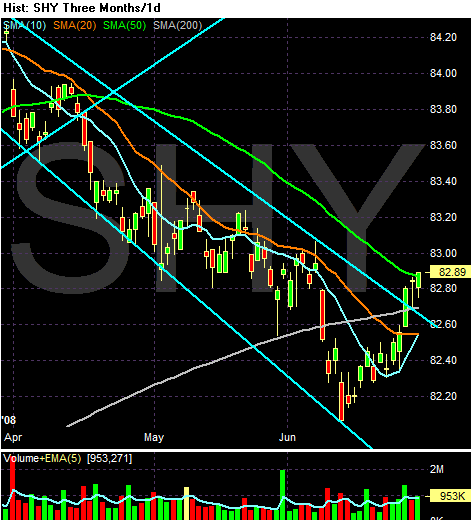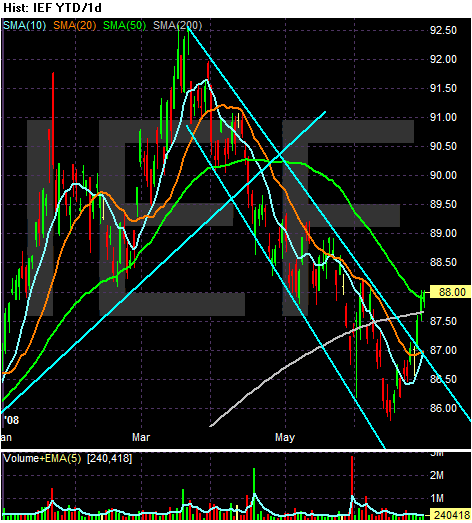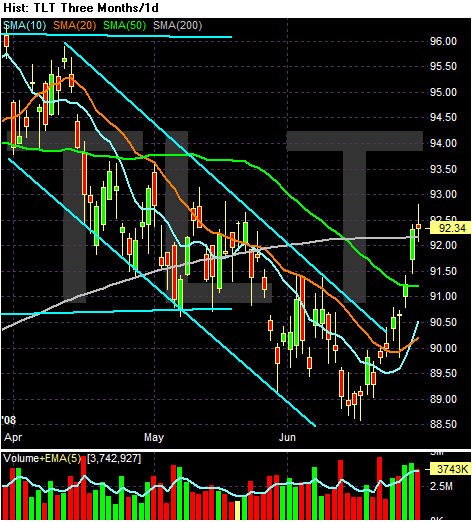U.S. Treasuries headed for their biggest quarterly loss in four years because of speculation the Fed will push borrowing costs higher later in 2008 to keep inflation in check.
Let's look at the 6 month charts to get a better picture of that is happening.



The short, medium and long end of the curve have all been dropping for a few months. The question is why? There are several reasons. First, all three parts of the curve rose in a big way in reaction to the credit crunch that started last summer. So the sell-off is simply a matter of profit taking. Secondly, the equity markets started rallying in mid-March. This rally competed with the Treasury market for funds and attention and won. Third, inflation started to become more and more prevalent:
Conflicting stories about inflation and growth will buffet markets this week and beyond, keeping bonds tied to ranges, with intraday swings, unless the credit crisis or the economy take a large turn for the worse. That would force central banks to shift their attention away from inflation back to growth -- an unlikely prospect this week, with the European Central Bank set to raise rates at its meeting Thursday.
Also remember this part of the Fed's statement:
The substantial easing of monetary policy to date, combined with ongoing measures to foster market liquidity, should help to promote moderate growth over time. Although downside risks to growth remain, they appear to have diminished somewhat, and the upside risks to inflation and inflation expectations have increased. The Committee will continue to monitor economic and financial developments and will act as needed to promote sustainable economic growth and price stability.
So - why are all three Treasury sectors rallying right now -- and why have they broken through upper resistance? My feeling is the market thinks two things. First, there is a safe haven bid in the Treasury market from the recent market turmoil. Secondly, the Fed said they would probably act but didn't. The lack of action led traders to buy the market now.